#headstone iconography
Text

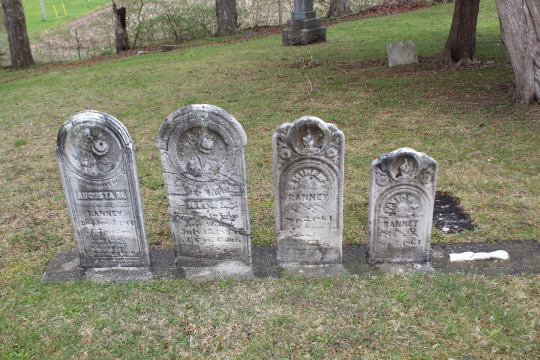
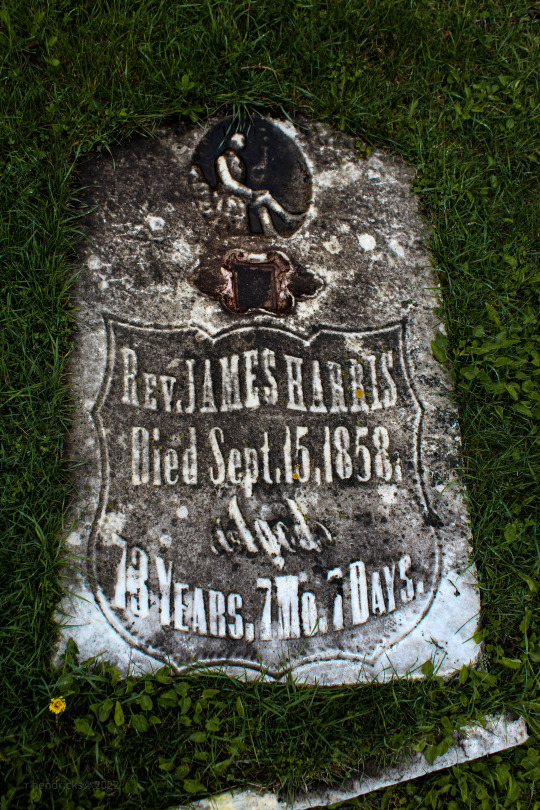

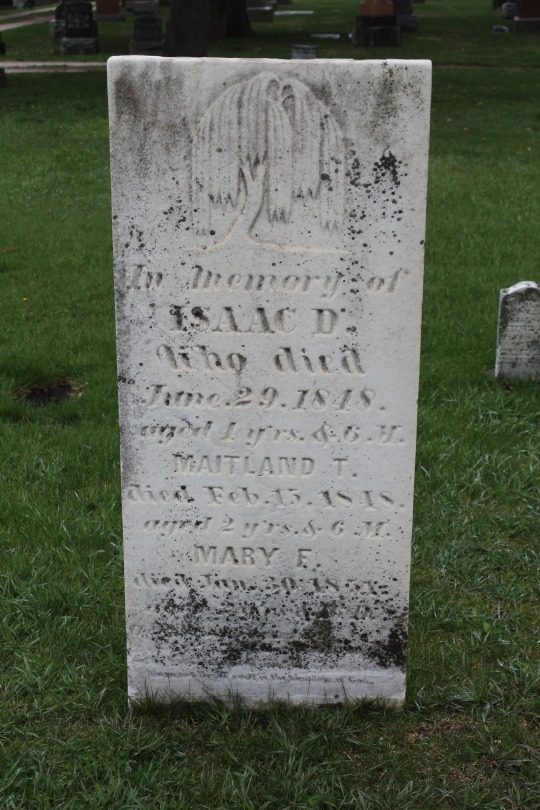
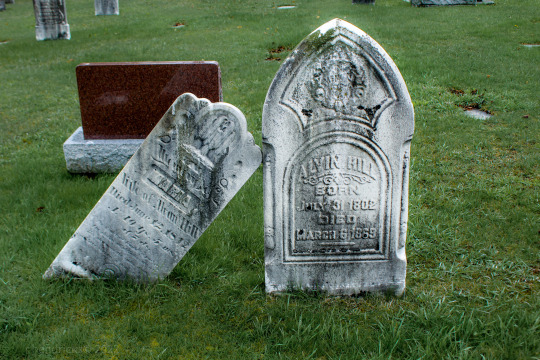
Harris Street Cemetery
Ingersoll, ON
April 2023
#canon photography#cemetery#headstone#taphophilia#road trip#backroads#southwest oxford#ingersoll#graveyard#explore ontario#historic cemetery#stone carving#headstone iconography
67 notes
·
View notes
Note
is there anything else like the recipes on graves in history? the closest thing ive seen is a roman grave that said something like "thank you for visiting me have a blessing"
Not that I know of off the top of my head, but headstones/cemeteries aren't really my area of expertise.
youtube
But here's a great video from Ask a Mortician about some of the meanings behind common iconography on headstones!
-Reid
40 notes
·
View notes
Text
Newest sticker design for the sticker shop (!!!) that I am trying to open next month, and newest Faithful Heretic Icon: Doctor-Saint James Barry, Holy Unmercenary Physician and Patron of Queer and Trans Healthcare

Iconography:
"Holy Unmercenary": this is a special title used (mostly in Orthodox Christianity) for healthcare practitioners who treat the poor for free. As part of his work as an army surgeon, Dr. Barry was in charge of public health and sanitation near imperial outposts. He consistently advocated for the poorest and most vulnerable segments of the population, even when it brought him into conflict with his peers.
Halo: Dr. Barry's halo is painted in Trans Pride colors. He was assigned female at birth, but began living a man's life in his late teens with the support of his family and open-minded family friends. He was known as a man for the rest of his life, until his body was examined (against his express wishes) after his death. His headstone commemorates him with his chosen name and military rank.
Medical kit: Something like this would have been Dr. Barry's toolkit and his constant companion on his travels. In a very real way, he was "married to the job." It is marked with his name and a simple cross. Little is known about his personal religious devotion (if he even had one), but he would have been familiar with Anglican rites and ethics. Many modern Anglicans still keep their faith private, and prefer to let their actions speak for themselves.
Dueling pistol: I wasn't sure whether to include this, since firearms are not common in iconography. I decided to include it for a couple of reasons. 1) Dr. Barry was a known duelist. Dueling with flintlock pistols was the height of masculine performance for gentlemen in his culture. Dueling pistols weren't very accurate and deaths weren't very common, but using them in a highly ritualized duel was a demonstration of manly discipline, skill, and honor. 2) Dr. Barry was willing to fight for what he thought was right, and he was constantly fighting. By laying his pistol between the viewer and his medical kit, he demonstrates that comprehensive queer and trans healthcare must be defended with force, if necessary. 3) It's worth reminding ourselves that Anglicanism, as the imperial religion of Britain, originally spread around the world at the end of a musket.
"Respect trans folk or I shall identify as a f--king problem": this is a "poshed up" version of a slogan on a banner carried by pro-trans-healthcare protestors in my city recently. I think it started as an internet post, but I can't remember where I first saw it.
Hagiography:
By most accounts, Dr. Barry was a brash, aggressive, and unpleasant person, especially when someone had challenged him. He kept his personal life very private. Nevertheless, he was highly respected as a professional and was said by his female patients to have a reassuring and respectful bedside manner. He even performed something that arguably counts as a miracle: the first verified C-section, by a Western doctor, in which the mother and child both survived.
A "saint" is a holy person, not necessarily a "nice" or "polished" person. In his role as a British army surgeon and public health officer, Dr. Barry would have seen and worked in some of the most miserable and depraved conditions you can imagine. Medical treatments were risky, painful, and often experimental. His environment shaped his character, but did not erase the gentle, compassionate spirit he demonstrated with his patients.
After Dr. Barry's death, the British government was embarrassed by the fact that he was a trans man, and they sealed his service record for the next 100 years. It was rediscovered by scholars in the 1950s, and more recently by the general public of people interested in queer history.
49 notes
·
View notes
Text
I took a walk through a cemetery the other day, and had some profound realizations on how the way we create headstones is a love story to ourselves and those around us.
The other day, I had an extra hour before work, and I’d been itching to get anywhere outside. I live by a few cemeteries, and the Union Cemetery I hadn’t visited yet. It’s a big cemetery that has several roads running through it, so I parked at the front and made my way walking to the back.
I’m walking through the road and looking at all of these graves that have World War I veterans (and presumably people from the civil war era), and it strikes me that cemeteries mainly serve a non-practical purpose. At least in our modern mostly-Christian society, in our treatment of life after death, we largely don’t actually believe that any of the afterlife is attached to the body – the soul or spirit or whatever goes off to somewhere else. Despite this, we still take the time and care to set aside a bit of land where we’re going to keep this person’s old body and mark the fact that they’re there. Why, and who is this for? It doesn’t seem like it could be for them because they’re gone, but it a sense, it still is for them, and at the same time it’s also for us. For them, it’s keeping their memory going, or monumentalizing the fact that they were here, or maybe just making sure that their death doesn’t go unnoticed – it’s making the fact that they’re gone official by leaving a mark in their stead. For us, it’s because we need all of this to be able to resolve the grief surrounding their death. We receive solace from turning grief into the reassurance that their impact lives on in some way, or if anything else, making a spot for us to imagine a constant connection back to them. In other words, we’ve created sacred representations of those that we once loved to fill their absence from our lives.
But as I continued walking through the cemetery and especially when I came upon more modern graves, I started to realize there was even more to it. I noticed so many more combined headstones that marked that members of a family were buried right next to each other. Headstones started to have small symbols or decorations on them that characterized them, made them unique either from important parts of the buried’s lives or just fun designs that they or someone decided should be on the headstone. Even further on, there were pictures of people etched onto the stone, religious iconography, quotes and tributes, and even places marked where a member of the family who hadn’t died yet would eventually be buried. This commemoration and representation of someone’s life started to evolve – we’d taken its function as a way to remember the life of whomever was buried and started to personalize it to infuse even more life and meaning into it. These were things that the deceased had planned too! These were designs where before dying, the people had decided they wanted traces of what made their lives meaningful to be displayed for all those to come after them. They were thinking of everyone who wanted to come by their grave to show their love and said, “this is what I want you to remember me by.” It’s a tribute to themselves and establishing their own memory, but it’s also a thoughtful gesture that shows how prevalent the idea is that people will see your grave after you die, which is such a powerful concept for someone to comprehend. And yet we do it! For the sake of ourselves and for the sake of those that we love, we turn death into a final state of living, and decide what we want our last mark on the world to be, because we’ve decided that’s important to ourselves and to those around us. And I think that’s beautiful – I think it’s a love story to our lives and the lives of those around us.
25 notes
·
View notes
Note
hi i just want to say that over the course of the last few months i absolutely powered through your entire ao3 and it's not even an exaggeration to say it changed my life. since then i've sampled perfumes. i've baked cakes. i bought lingerie solely for myself. i sent fun cards and care packages to friends for absolutely no reason at all. i read nonfiction on the history of jewelry and flowers (and also one on human cadavers and mortuary science, which doesn't seem as darcy as the others, but still). all this to say thank you for the joy you've brought me- both directly from reading your fics and also indirectly from inspiring me to explore my life further. i hope you have a lovely day!!!
Awww, anon! Thank you! This is so cool. And actually, I think the mortuary science book could be on Darcy's nightstand, too. More books you may like:
1.) The Poisoner's Handbook by Deborah Blum (about early forensic science in NYC---it turns out that people used to get away with poisoning a lot)
2.) The American Way of Death by Jessica Mitford (this is from the 70s---she was the Communist/labor activist sister in a family of eccentric/mad/flamboyant British aristocrats---but many of her criticisms of our funeral industry are still correct)
3.) The English Art of Murder by Lucy Worsley (a history of the origins of true crime fascination, basically)
4.) The Secret of Chanel No. 5 by Tilar Mazzeo (a history of the perfume)
I also once went to a library talk on historic American headstone art and iconography. It was very cool. I need to look up a book on that.
Thank you so much for sending this! It really made my day!
15 notes
·
View notes
Text
I need a long romantic walk in a cemetery.
Let's look for iconography and see if we can trace family lines.
Kiss me the way he probably kissed his wife (laying dead next to him) before he left for the war.
Press me into this mausoleum, marvel cold on my back, your hand a warm necklace pressing in, soft lips brushing against my skin.
Fingers interlaced, tell me about the first funeral you went to. I'll tell you about when I lost my grandmother. Opal. I flip you off, an opal ring on my middle finger.
Read me a love poem carved on a headstone while you caress my body.
We'll sit on a bench by the reflection fountain and you'll give me stern looks to keep quiet while you slip your hand down my pants. Your eyes go wide and a sly teasing smirk appears on your mouth. I'm so wet for you. I've been seeing the light in your eyes and your hair matches the trees. I can't stop thinking about what I want you to do to me once you take me back to your house. The way you like to fuck me through my orgasm so that I'll gush all over your cock. I'm addicted.
My ass is frozen on this marble bench but my pussy is radiating heat. Your finger slips easily past my slick lips. You mock me and laugh "really? You such a needy, eager little pup." Flicking lightly at my clit. It makes me gasp and you pull back. I'm heartbroken and it shows on my face.
You laugh at my neediness, "what, you want me to fuck you on these graves? In front of the ancestors?" Sirens in the distance snap me back to reality. "In front of the firefighters??" You tease me and I think about what you and the firefighters could do with me.
Pull me up and let's do another circle down around the older area before we walk back toward the coffee shop.
0 notes
Text
Further Development Project 1
Of Myth And Notoriety/Lycanmancer
Post #2
My own Game Concept blurb that I will be developing artwork for:
Of Myth and Notoriety
The gods, ever at odds, but sharing a sadistic enjoyment of entertainment, decided to settle their matters through human ends by resurrecting and raising champions. The only criteria was to choose people that had no current renown. The gods chose would-be champions based on affinity, personality and latent talent.
A tragic, lonely death of an absurdly unremarkable character catches the attention of one such god, who resurrects them as an undead; a second, albeit cursed, chance to create a new myth, and attract a notoriety that would rival even the gods'.
Fitting with the theme of playing as an undead character, respawning has more of a focus. Your character's burial plot can be upgraded over time and increase in complexity and change in appearance as your character makes choices across the alignment chart in-game.
For example, a humble tombstone may upgrade into a marble Gothic headstone if lawful good choices are made, or a cursed mausoleum if chaotic evil choices are made and myth and notoriety develop.
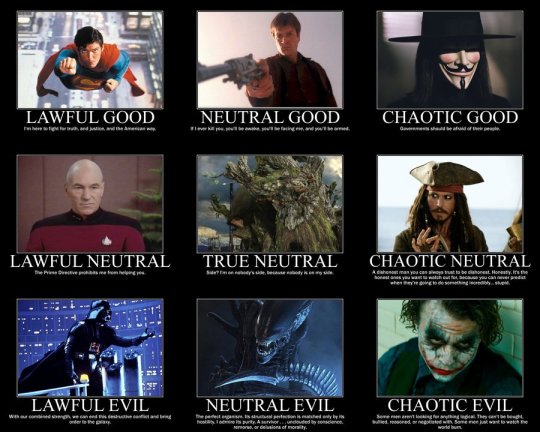
An alignment Chart often used as part of D&D game play
I have broken up the above alignment chart to create a style guide for how the grave markers could changed based on game play.
Cultural Influences:
Lawful: Gothic
Neutral: druidic/nordic/celtic
Chaotic: cambodian/indian inspirations for good, aztec but sharp for evil
Shape Language:
Evil: Triangle
Neutral: Circle
Good: Square
Details:
Lawful Good
Headstone Inspiration: Gothic inspired, polished white Marble, gold engraved text, symmetrical, square. Clean, orderly, clinical.
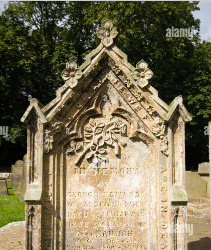
UK Cheshire Aldford St John the Baptist Church churchyard. travelib prime, 2008
Monument inspiration: Tour St Jaques, Paris
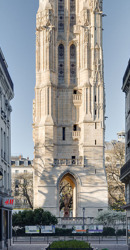
Saint-Jacques Tower at sunrise. Benh, 2015
Neutral Good
Headstone: Cairns which can increase in size & detail levels of single standing stone, evolving into a small henge monument with celtic carvings.
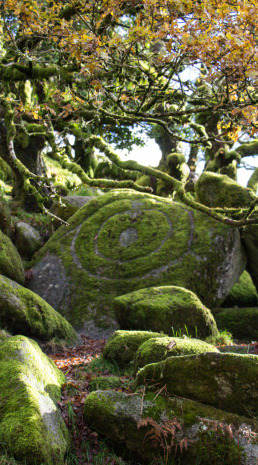
Wistman’s Wood, Sidgreaves, 2018
Monument Inspiration:
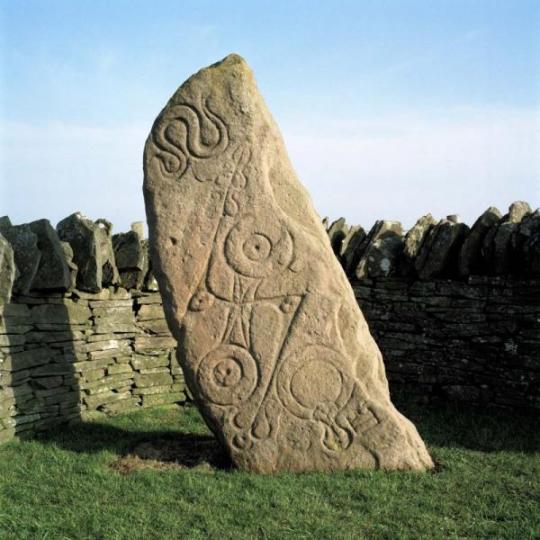
Pictish standing stone (number 1) at Aberlemno. Scarf, n/d
Chaotic Good
Headstone: Repaired Kintsugi-style white granite Hindu style goddess with many arms.

Kintsukuroi: A perspective on COVID-19. Hayee, 2020
Lawful Neutral
Headstone: No religious iconography.
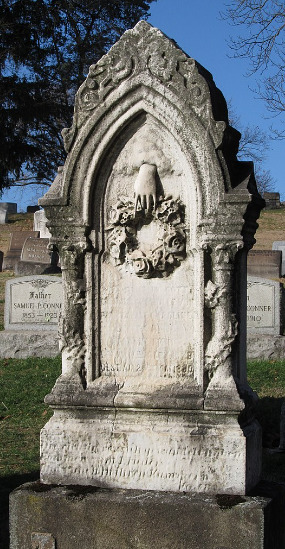
Illegible German Monument, South Side Cemetery. 3Dscanstore, 2020
Monument Inspiration: Sir Walter Scott Monument, Edinburgh

Edinburgh’s Gothic Missile. Traveling Savage, (Aelyth Savage), n/d
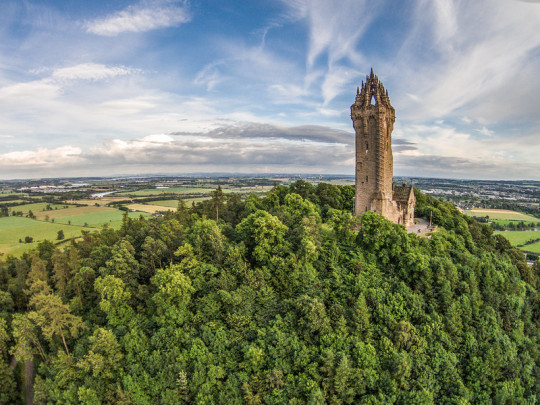
The National Wallace Monument. Ritebook, 2021
True Neutral
Headstone: All myth is reciprocated by nature, with little to no human elements, epic natural formations with growing wild flowers and stones. E.g. A flowering tree spiraling around standing stones.

The standing stone of Tir Artair. Megalithix, 2013
Chaotic Neutral
Headstone: I would describe the tombstone design to be an irregularly shaped monolith, seemingly suspended at an odd angle with symbols of unpredictability, like swirling patterns or abstract designs. The inscription is cryptic, hinting at the complexity and unpredictability of the person whom the memorial is for..
Lawful Evil
Headstone: Corrupted "Lawful Good".

The Haserot Angel. DocBrownX, 2014
Monument Inspiration:

Gothic Fountains. Ferrebeekeper, 2017
Neutral Evil
Headstone: Circular stone formation, hanging bones, bird wings, moss, lichen, poison puffy mushrooms, thorny vines.
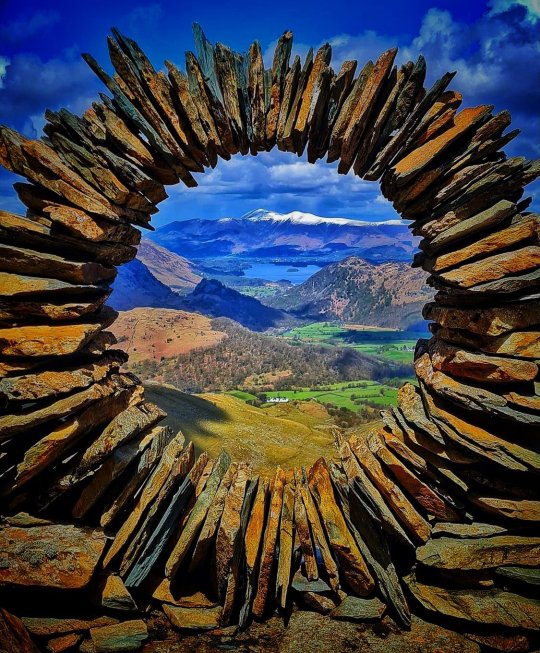
Mystery artist creates elaborate stone artworks. Barrowdale Institute, 2021
Chaotic Evil
Headstone: Grotesque and malformed/monster-human hybrid sculptures/cthulhu

Telmessos. Fethiye, (n/d)
Image References:
3Dscanstore. (2020). Illegible German Monument, South Side Cemetery. [Photograph]. https://pittsburghcemeteries.wordpress.com/2020/12/16/illegible-german-monument-south-side-cemetery/: Pittsburghcemeteries.
Benh, L. (2015). More details Saint-Jacques Tower at sunrise. [Photograph]. https://en.wikipedia.org/wiki/Tour_Saint-Jacques#/media/File:Tour_Saint-Jacques_BLS.jpg: Wikipedia.
DocBrownX. (2014). The Haserot Angel. [Photograph]. https://www.atlasobscura.com/places/the-haserot-angel-cleveland-ohio: AtlasObscura.
dungeonsdragons.fandom. (n/d). Alignment. [Online]. dungeonsdragons.fandom.com. Available at: https://dungeonsdragons.fandom.com/wiki/Alignment [Accessed 9 January 2024].
Ferrebeekeper. (2017). Gothic Fountains. [Photograph]. https://ferrebeekeeper.wordpress.com/2017/10/18/gothic-fountains/: Ferrebeekeper.
Fethiye. (n/d). Telmessos. [Photograph]. https://fethiye.goturkiye.com/telmessos: GoTurkiye.
Hayee, F. (2020). Kintsukuroi: A perspective on COVID-19. [Photograph]. https://www.linkedin.com/pulse/kintsukuroi-perspective-covid-19-fawad-hayee-ca: Linkedin.
Megalithix. (2013). The standing stone of Tir Artair. [Photograph]. https://megalithix.wordpress.com/2013/02/17/tir-artair/: Megalithix.
Ritebook. (2021). The National Wallace Monument. [Photograph]. https://www.ritebook.in/2021/06/wallace-monument-scotland.html: Ritebook.
Scarf. (n/d). Pictish standing stone (number 1) at Aberlemno. [Photograph]. https://scarf.scot/national/medieval/5-empowerment/5-2-standing-stones/: Scarf.
Sidgreaves, M. (2018). Wistman’s Wood. [Photograph]. https://dartmoorwalker.co.uk/2018/11/wistmans-wood/: DartmoorWalker.
travelib prime. (2008). UK Cheshire Aldford St John the Baptist Church churchyard.
Traveling Savage. (Aelyth Savage). Edinburgh’s Gothic Missile. [Photograph]. https://www.traveling-savage.com/2011/03/18/picture-this-edinburghs-gothic-missile/: Traveling Savage.
0 notes
Photo
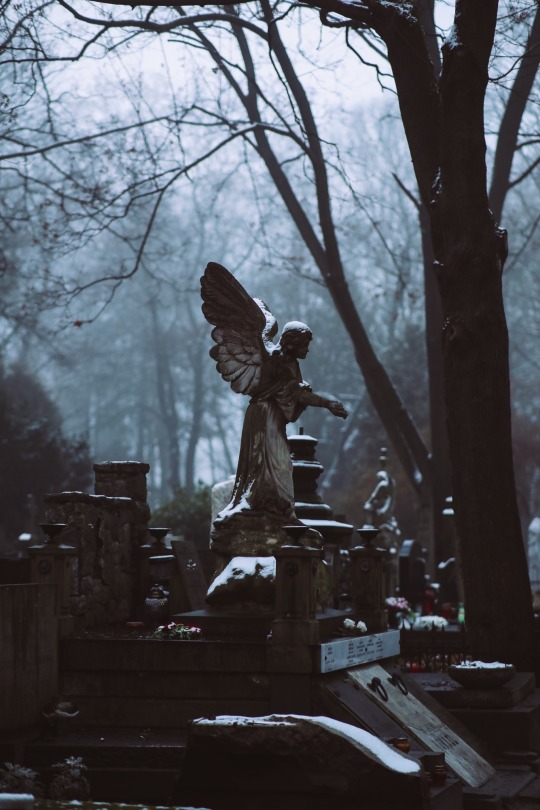
When Varah wanted silence, she visited her sisters.
Outside Darkshire, between Twilight And Brightwood Grove, stood the remains of a long forgotten chapel. It bore the sigil of a tree with roots that turned into a blade, the iconography nearly faded after decades of erosion. In this part of Duskwood, there was no sound of life. No songs of birds, the chittering of spiders, the howling of wolves or the wails of ghosts.
Silence, the only sound to be heard was the soft patter of rain falling upon the stone.
The witch, donned surprisingly in heavy plate, made her way through the old graves. Twenty headstones were carefully tended to by her, as once a week she would brush the leaves and moss away, driving the spiders from this sacred, morbid location.
One grave site in particular was her destination, looking upon it with a sad gaze, hidden by the heavy helm of her plate.
SISTER DELPHIA TREVELYAN. CLERIC. DAUGHTER. HERO.
Varah knelt down before the headstone, laying her sword down next to her as she reached to pull free the helm from her head, ebon tresses already slick from the rain that fell lightly through the small clearing. The helmet was set down by the sword, a clawed hand coming forward to run those claws ever so gently across the surface of the stone.
“I’m sorry, Delphia.”
The silence that followed was lengthy, Varah’s breathing growing heavier as she felt her heart swell with long-repressed grief and sorrow. She was unable to fight back the tears, eyes welling with water before they began to streak down along her face.
“You will never know, but I tried. I tried to stop them… but I failed. I alone thought I could hold back the tide of malice and Fel fire… pride is my greatest sin, which is why I forever suffer the greatest punishment… surviving where you, my beloved, perished.”
The witch broke, choked sobs coming from her as she slammed her fist into the soft earth, keeling over before rolling onto her side, laying down feet above the old remains of the cleric. A clawed hand came up over her face, as if to hide her shame from the silent gravestones of the ones she cherished most in life.
“It’s not fair…” She began, her words spoken between choked, ugly sobs. Here, in the silence and solace of this forgotten place, could she let down the walls that she so jealously guarded herself with. The cries became wails, the haunting sound of grief and agony carried upon the wind. “...I should have died with you. I don’t deserve this life, this chance at redemption. They all do not understand…”
Slowly, Varah shifted herself to lay flat upon the ground, the claw at her face moving to press down upon the earth, as if reaching for the woman that lay beneath. Her glowing, yellow eyes were reddened with grief, painted lip trembling as she lay still, attempting to swallow the sobs that wracked her chest. “Come back to me, Delphia. Even as a shadow… even as a dream, just please… come back to me…”
1 note
·
View note
Photo

Tuesday 03 January 2023 14:30 JT Statement On Sunday 01 January 2023 at approximately 15:20 JT two men broke into the Jerusalem Protestant Cemetery on Mount Zion and desecrated over 30 graves. The vandalism involved breaking crosses, pushing over headstones, smashing iconography, and throwing debris over the edge of the cemetery wall. The Mount Zion Police Department is working with staff at The American Institute of Holy Land Studies (also known as Jerusalem University College) to identify two young men caught on security cameras throwing large pieces of marble crosses at headstones. Local police are further engaged in an effort to restore peace and safety to those residing in the Mount Zion community. The cemetery was founded in 1848 and is maintained by the local Lutheran and Anglican communities. Among the desecrated graves were three commonwealth graves of Palestinian Police officers, and members of various Protestant communities, including Bishop Samuel Gobat, the second Protestant Bishop of Jerusalem, and the purchaser of the property on which the graveyard stands. Articles on the incident (so far): https://www.i24news.tv/en/news/israel/society/1672756717-over-30-graves-vandalized-in-jerusalem-protestant-cemetery https://www.mako.co.il/news-law/2023_q1/Article-ba75e9416687581026.htm&utm_source=Whatsapp&utm_medium=Share?fbclid=IwAR0yCC3Nle2v2KI6sRp6smqPpRBkWxyCSjYMhcsWb2A6S5zep_SqLbZJgWQ https://www.instagram.com/p/Cm9r5aVM3Sv/?igshid=NGJjMDIxMWI=
0 notes
Text
More than 30 Christian graves vandalised in Jerusalem cemetery | World News
More than 30 Christian graves vandalised in Jerusalem cemetery | World News
More than 30 Christian graves have been vandalised in a Jerusalem cemetery – some of them British Commonwealth War Graves.
Headstones were toppled, iconography destroyed, and graves smashed, in an incident at around 3.20pm on Sunday afternoon.
CCTV covering a part of the cemetery shows two young men carrying out the attack, at one stage throwing chunks of marble at a notable grave and seemingly…
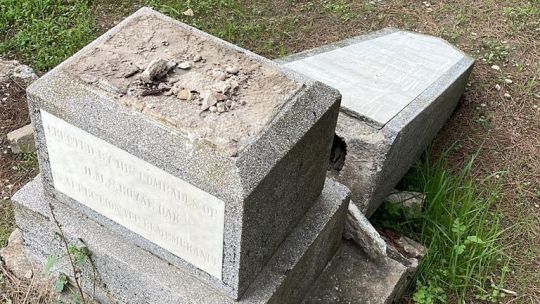
View On WordPress
0 notes
Text
More than 30 Christian graves vandalised in Jerusalem cemetery | World News
More than 30 Christian graves vandalised in Jerusalem cemetery | World News
More than 30 Christian graves have been vandalised in a Jerusalem cemetery – some of them British Commonwealth War Graves.
Headstones were toppled, iconography destroyed, and graves smashed, in an incident at around 3.20pm on Sunday afternoon.
CCTV covering a part of the cemetery shows two young men carrying out the attack, at one stage throwing chunks of marble at a notable grave and seemingly…
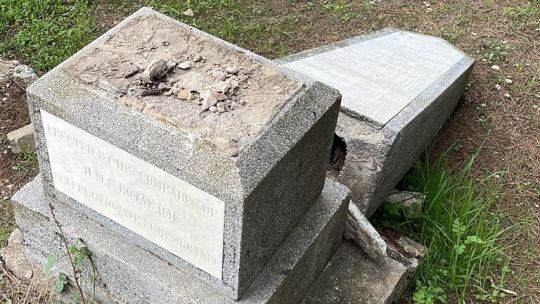
View On WordPress
0 notes
Text
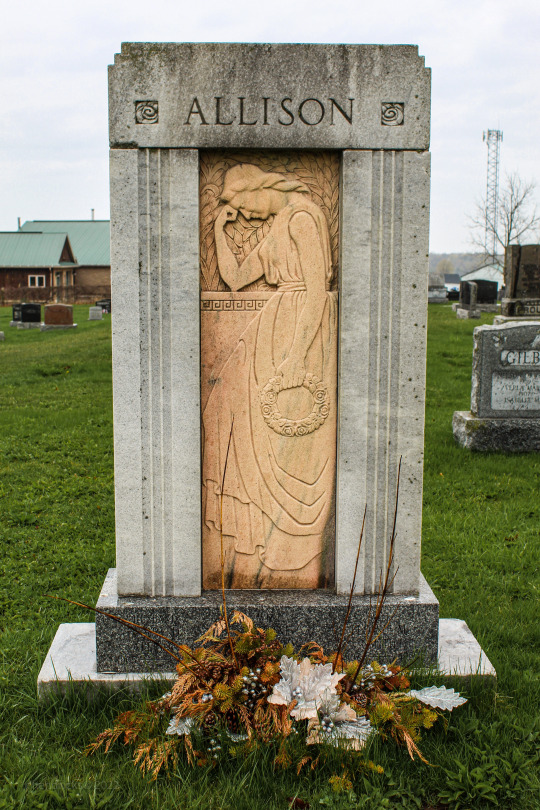




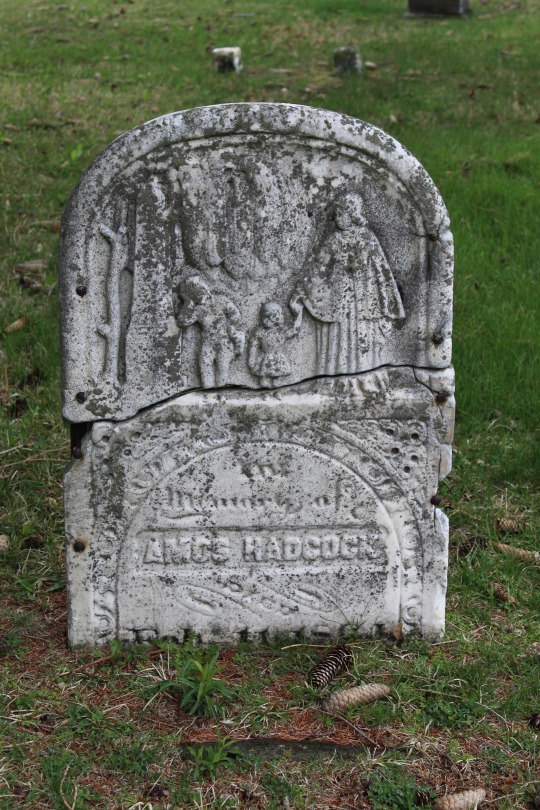
Mount Elgin Cemetery, Mount Elgin, ON
April 2023
#cemetery#headstone#taphophilia#southwest oxford#ontario#backroads#country drives#graveyard#handcarved#iconography
57 notes
·
View notes
Photo
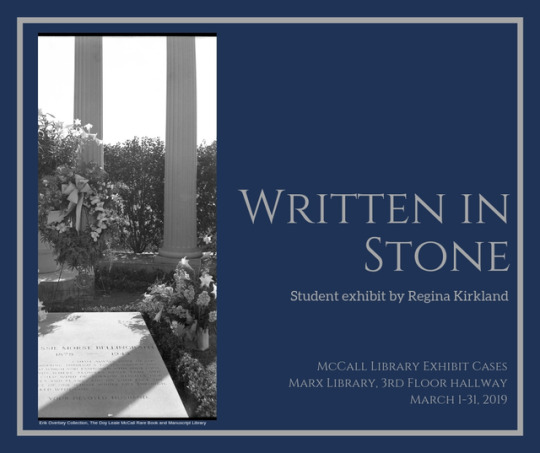
We have a new student exhibit on display for the month of March. Marx Library 3rd floor hallway.
#cemeteries#graves#headstones#iconography#memorials#mccall library#university of south alabama#archives
2 notes
·
View notes
Text
In G. F. Snyder’s Ante Pacem: Archaeological evidence of Church Life before Constantine, we find some very curious evidence regarding what early Christians were actually doing:
"Jesus does not suffer or die in pre-Constantinian art. There is no cross symbol nor any equivalent... From 180 to 400 AD artistic analogies of self-giving, suffering, sacrifice, or incarnation are totally missing. The suffering Christ on a cross first appeared in the fifth century, and then not very convincingly."
Jonathan Z. Smith writes:
"With respect to the limited corpus of early Christian symbols – the lamb, the anchor, the vase, the dove, the boat, the olive branch, the Orante, the palm, the bread, the good shepherd, fish and vines and grapes – Snyder argues: “Among all the symbols … none signifies suffering, death, or self-immolation. All stress victory, peace, and security in the face of adversity. The Jesus iconography follows the same patterns. There is no place in the third century for a crucified Christ, or a symbol of divine death.”
The iconography of Jesus depicts him as mainly a youthful wonder-worker and healer. Even in the case of the popular scene of Lazarus being raised from the dead:
"It depicts the present reality of resurrection rather than belief in another world. … [The early Christians] ate with the dead, talked to the dead, asked for their assistance. … The resurrection motif supports neither a view of otherworldly immortality nor a view of end-time judgment and resurrection. The presence of the dead [within the community] was made possible through the redeeming act of the wonder-worker, Jesus. Those resurrected dead then were part of the extended Christian family."
In short, what the archaeology shows is that one of the central cultic activities of the earliest Christians was a communal meal with the dead, a meal that did not recall the sacrifice of Jesus Christ. The cemetery was one of the two centers of activity. In this context, recall that Paul’s most extensive discussions of resurrection of the dead – 1 Thess and 1 Cor – are both triggered by questions concerning the status of dead members."
Early Christian graffiti in cemeteries concerns prayers addressed to the dead on behalf of the living. The meal, the refrigerium, was eaten in honor of the birthday or death day of the deceased person. The service included anointing of the headstone, antiphonal singing, and dancing; wine was poured into a depression that allowed it to enter the tomb to be consumed by the dead person.
"There is no sign of a more sophisticated (!) immortality, nor does resurrection, at least as revivification or resuscitation play any role. The dead remain dead, in a sphere other than the living; but there is contact, there is continuity of relationship, there is memorialization, there is presence.... Above all… a sense of confidence."
So, that’s pretty much it in a nutshell, though Snyder has an entire book with cited evidence and photographs of artifacts.
-- Laura Knight-Jadczyk, From Paul to Mark
24 notes
·
View notes
Photo
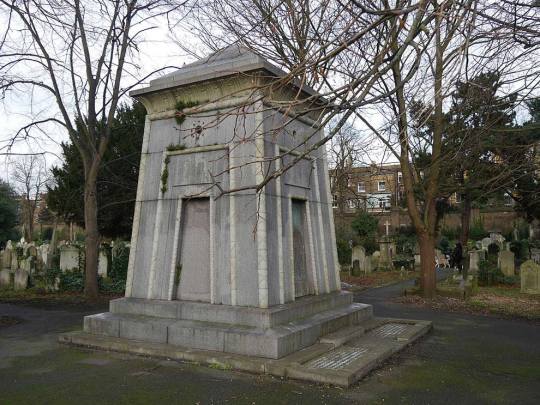
The Legend of London's Time-Traveling Tomb
In the middle of the grounds and shrouded by trees stands a mausoleum. An imposing 20 feet tall with a pyramid peak, it’s made from granite, with a heavy bronze door secured by a keyhole. Decorative accents line the front, furthering the air of mystery. The door’s margin displays a rectangular band of Egyptian hieroglyphs. Erected in the early 1850s, it was intended as the final resting place of a woman named Hannah Courtoy and two of her three daughters, Mary and Elizabeth.
For the many visitors who make moonlight visits to the cemetery and for a small band of London raconteurs, the tomb’s missing key and resulting lack of access has led to speculation that something strange is going on inside—that it's secretly a time machine.
Born around 1784 (sources differ), Hannah Peters fled an abusive father at a young age and found work as a housekeeper and as a tavern employee. In 1800, a friend introduced her to John Courtoy, a 70-year-old former wigmaker in poor health who had made a fortune in the lending business. Peters was shortly in his employ as a housekeeper. Within the year, she had given birth to the first of three daughters. She claimed they were Courtoy’s, although some eyes were raised in suspicion that the friend who made the introduction, Francis Grosso, might have been the real father.
Courtoy’s illness is also ill-defined in historical accounts, although it was said to follow a violent run-in with a prostitute in 1795 that left Courtoy—who had been slashed at with a knife—reserved and antisocial. He apparently warmed to Peters, who took his name and exerted considerable influence over many of his decisions. Courtoy’s 1810 will, which left the bulk of his fortune to an ex-wife named Mary Ann Woolley and their five children, was revised in 1814 so Hannah received the majority share.
When Courtoy died in 1818, the contents of the will were disputed, both by Woolley and Courtoy’s French relatives; they argued that dementia had overtaken Courtoy’s better senses. The legal arguments dragged on through 1827, at which point Hannah and her daughters had received most of Courtoy’s money.
According to the account presented in author David Godson’s 2014 book Courtoy’s Complaint, largely based on diaries kept by Courtoy housekeeper Maureen Sayers, Hannah's urge to distract herself from the often-unpleasant Courtoy led to developing a friendship that would prove essential to her later mythology. Like many Victorians of the era, Hannah was intrigued by Egyptian iconography, particularly hieroglyphics. She believed Egyptians had a deep understanding of astrology and their place in the universe, and she invited Egyptologist Joseph Bonomi over for regular visits.
Bonomi and Hannah would spend hours discussing Egyptian lore, with Hannah hoping to one day fund Bonomi’s expeditions to Egypt so he could study their work. The two would also arrange for a 175-foot-tall monument dedicated to the Duke of Wellington to be constructed and insisted that the sculpture resemble an Egyptian obelisk.
When Hannah died in 1849, her remains were set to be placed in an expensive, elaborate mausoleum in Brompton that paid tribute to her interests; Bonomi arranged for the tomb to feature Egyptian characters and a pyramidal top. Later, Mary and Elizabeth, who shied from marriage because they didn’t want men chasing after their wealth, joined her. (Susannah, who married, was buried elsewhere.) When Bonomi died in 1878, he arranged for a depiction of Courtoy’s tomb to appear on his own modest headstone. Whether Bonomi intended it or not, an illustration of Anubis, the Egyptian god of the dead, appears to be “looking” in the direction of his friend’s final resting place.
Things appeared to remain status quo at Brompton for the next 100 years or so. Then, around 1980, the key to the tomb was lost following a visit by Hannah's relatives. And that’s when things took a turn for the weird.
Intending to pique the interest of readers during Halloween, Associated Press reporter Helen Smith wrote a story in October 1998 that may have been the first mainstream article to raise the theory that Courtoy’s tomb might actually be a time machine.
Smith described the monument as a “strange, imposing structure” containing “three spinsters, about whom almost nothing is known” and cited an unheralded author named Howard Webster as perpetuator of the story. Webster claimed his research had excavated a connection between Bonomi and Samuel Alfred Warner, a “maverick Victorian genius” and fraudster said to have attempted to interest the British armed forces in several advanced weapons—too advanced, in fact, to actually exist.
Webster speculated that Warner’s inventive abilities may have led him to consort with Bonomi, who supposedly had knowledge of the Egyptian theories of time travel. Together, the two convinced the wealthy, trusting Hannah to finance their secret project, with Bonomi providing ancient wisdom and Warner adding his breakthrough scientific resources. By placing their device in a cemetery, Warner could guarantee the structure was unlikely to be disturbed over decades or centuries, allowing him to return to London after traveling through time again and again.
The lack of a key was crucial to Webster’s tale. Since it had been lost and no one had been inside for years, it could be argued that perhaps Warner was busying himself in a manner similar to an occupant of the TARDIS, bouncing from era to era, while Hannah and her family were either entombed or buried someplace else entirely. Webster also claimed that plans for the tomb were missing, which was rarely the case with other monuments in Brompton.
With the key still missing, it was impossible to disprove the teleportation idea with any real precision, and the mythology allowed for a great deal of speculation. Was Warner, who died in 1848, killed because he knew too much about revolutionary technology? Why did the tomb take four years to complete following Hannah’s death, which meant she didn’t actually enter it until 1853? Was Hannah duped by the two to fund what she might have believed would be a pioneering mode of travel?
29 notes
·
View notes
Text
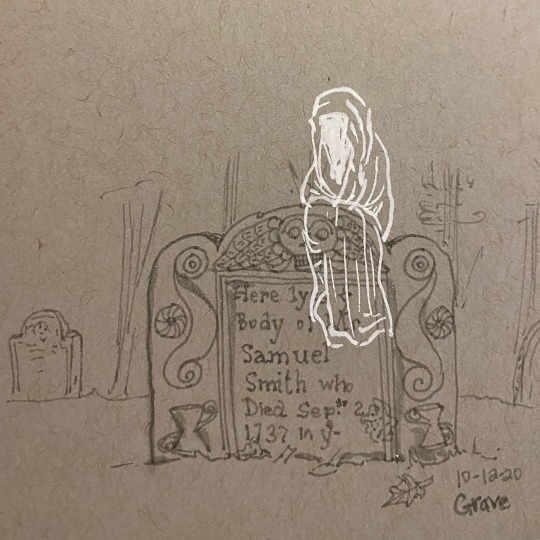
Mab’s Drawlloween day 12: grave. I’ve always been fascinated by early American tombstone iconography, including winged skulls. Here’s a grave with a tiny abstract ghost sitting on it. Bonus: while researching some 1700s Massachusetts cemeteries (many pictures had someone named Samuel, so that’s why I used the name), I found this photo. What is on that headstone in the back left? A plant person? I wish you could read the name on it so I could do more research. So odd!

5 notes
·
View notes